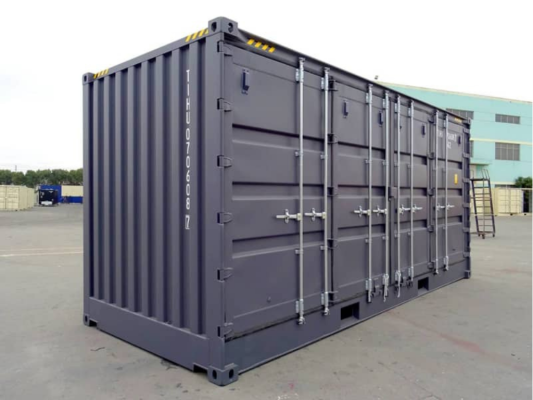
As the global population continues to rise, so does the demand for affordable housing. Traditional construction methods can be costly and time-consuming, leaving many individuals and families struggling to find suitable living arrangements. One innovative solution that has gained significant popularity in recent years is the shipping container home. These homes offer a sustainable, affordable, and flexible alternative to conventional housing, making them an attractive option for many. In this article, we’ll explore the advantages of shipping container homes, the challenges they present, and what you need to consider if you’re thinking about making one your next home.
What are Shipping Container Homes?
Shipping container homes are residential structures built from used shipping containers. These containers are typically made of steel and are designed to withstand harsh conditions while transporting goods across the world. Their durability and availability make them a viable option for housing. The containers can be modified, stacked, and combined to create unique living spaces that can be tailored to the needs of the inhabitants.
Advantages of Shipping Container Homes
1. Affordability
One of the most significant advantages of shipping container homes is their cost-effectiveness. Buying a used shipping container can be much cheaper than traditional building materials, especially if you are skilled in DIY projects. Additionally, the overall construction process tends to be faster, which can further reduce labor costs. Many people can create a comfortable living space on a limited budget, making container homes an appealing option for first-time buyers or those looking to downsize.
2. Sustainability
Shipping container homes are inherently eco-friendly. By repurposing used containers, you are contributing to recycling efforts and reducing waste in landfills. Moreover, many container home builders incorporate sustainable practices into their designs, such as using solar panels, rainwater harvesting systems, and energy-efficient appliances. This combination of reusing materials and implementing green technologies can significantly decrease your environmental footprint.
3. Flexibility and Customization
Shipping containers can be modified in countless ways to suit individual needs and preferences. Whether you envision a cozy single-container home or a multi-unit structure, the possibilities are virtually endless. You can customize the layout, size, and finishes to create a space that reflects your personal style. This flexibility also allows for creative architectural designs, making container homes a unique choice compared to traditional houses.
4. Durability and Low Maintenance
The steel construction of shipping containers makes them remarkably durable and weather-resistant. They can withstand high winds, heavy rains, and even seismic activity, making them a reliable choice for those living in areas prone to natural disasters. Additionally, containers require minimal maintenance compared to traditional homes, as they are less susceptible to pests and rot.
Challenges of Shipping Container Homes
While shipping container homes offer many benefits, there are also challenges to consider:
1. Zoning and Building Codes
Before embarking on a shipping container home project, it is crucial to research local zoning regulations and building codes. Not all areas permit the use of shipping containers as permanent residences. Some municipalities may have specific guidelines regarding the design, size, and placement of container homes. Navigating these regulations can be time-consuming and may require additional permits.
2. Insulation and Temperature Control
Shipping containers are made of steel, which can lead to extreme temperature fluctuations. During hot weather, the metal can heat up quickly, making the interior uncomfortable. Conversely, they can become chilly in colder months. Proper insulation is essential to ensure comfort year-round. This may involve additional costs for insulation materials and installation, so it’s essential to factor this into your budget.
3. Financing and Insurance
Financing a shipping container home can be more challenging than securing a traditional mortgage. Many lenders may not be familiar with this type of housing, making it necessary to do thorough research and potentially seek out specialized lenders. Additionally, obtaining insurance for a shipping container home may present its own set of challenges, so it is advisable to consult with insurance providers that understand the unique aspects of container living.
Conclusion
Shipping container homes are an innovative and increasingly popular solution to the affordable housing crisis. With their numerous advantages—such as affordability, sustainability, and flexibility—it’s no wonder that more people are considering them as viable living options. However, potential homeowners should also be aware of the challenges involved, particularly regarding local regulations and insulation needs.

